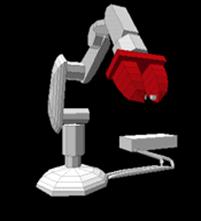Robotics
Published on Dec 12, 2015
Abstract
Over the course of human history the emergence of certain new technologies have globally transformed life as we know it. Disruptive technologies like fire, the printing press, oil, and television have dramatically changed both the planet we live on and mankind itself, most often in extraordinary and unpredictable ways.
In pre-history these disruptions took place over hundreds of years. With the time compression induced by our rapidly advancing technology, they can now take place in less than a generation.
We are currently at the edge of one such event. In ten years robotic systems will fly our planes, grow our food, explore space, discover life saving drugs, fight our wars, sweep our homes and deliver our babies. In the process, this robotics driven disruptive event will create a new 200 billion dollar global industry and change life as you now know it, forever. Just as my children cannot imagine a world without electricity, your children will never know a world without robots. Come take a bold look at the future and the opportunities for Mechanical Engineers that wait there.
The Three Laws of Robotics are:
1. A robot may not injure a human being, or, through inaction, allow a human being to come to harm.
2. A robot must obey the orders given it by human beings except where such orders would conflict with the First Law.
3. A robot must protect its own existence as long as such protection does not conflict with the First or Second Law
CLASSIFICATIONS OF ROBOTS
Robots are classified depending upon the circuitry of the Robots and the ranges of application. The classifications of Robots are into three types:
a. Simple level Robots
b. Middle level Robots
c. Complex level Robots
Simple Level Robots:
They are automatic machines that extend human potential. They cannot be programmed and does not contain a complex circuitry. E.g.: The best example of a simple level Robot is a semi automatic washing machine.
Middle Level Robots:
They are those Robots which can be programmed but cannot be reprogrammed. They are multi purpose devices. They have sensor based circuitry and can do work which humans do.
E.g.: The best example of a middle level Robot is the fully automatic washing machine.
Complex Level Robots:
They are those Robots which can be programmed and also reprogrammed. They are reprogrammable, multifunctional, manipulators. They contain a model based circuitry and are very complex.
E.g.: The best example of a complex level Robot is the personal computer.
ANATOMY OF A ROBOT
The basic components of a robot system are:
1. The mechanical linkage
2. Actuators and transmissions
3. Sensors
4. Controllers
5. User interface
6. Power conversion unit
The Mechanical Linkage
The manipulator consists of a set of rigid links connected by joints. The joints are typically rotary or sliding. The last link or the most distal link is called the end effectors because it is this link to which a gripper or a tool is attached. Sometimes one distinguishes between this last link and the end effectors that are mounted to this link at the tool mounting plate or the tool flange.

Fig Manipulator linkage
The manipulator can generally be divided into a regional structure and an orientation structure. The regional structure generally consists of the joints (and the links between them) whose main function is the positioning of the manipulator end effectors. These are generally the proximal joints. The remaining distal joints are mainly responsible for orienting the end effectors.
The different ways a manipulator linkage can move is called its degrees of freedom.
Actuators and Transmissions:
An Actuator is a device that makes freedom possible. The basic form of actuator is an electric motor. The various electric motors used are:
1. Stepper Motors: They are used to control the arms of robots.
2. Servo Motors: They are used to control the wheels of Robots. They use PWM technique for speed control.
The actuators are typically linear or rotary actuators. Also they may be electric, pneumatic or hydraulic. Typically, electric actuators or motors are better suited to high speed, low load applications while hydraulic actuators do better at low speed and high load applications. Pneumatic actuators are like hydraulic actuators except that they are generally not used for high payload.